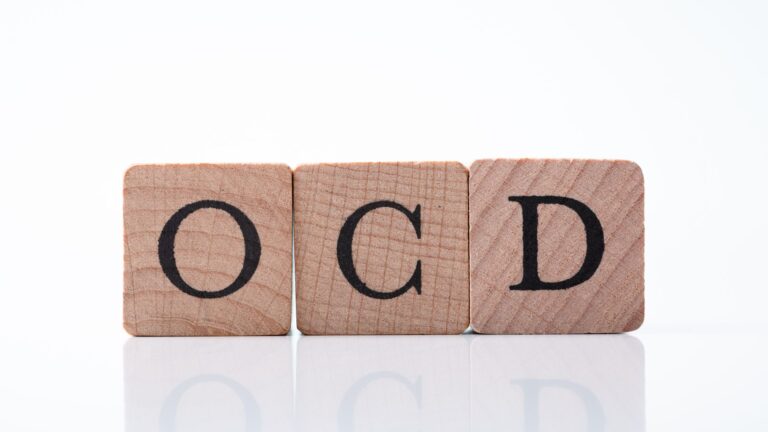Are you the parent of a child or teenager with autism spectrum disorder (ASD) wanting to learn more about the Yale-Brown Obsessive-Compulsive Scale, also called the Y-BOCS? Are you on the spectrum or an autism care provider seeking more information concerning the clinician-administered and self-reporting testing versions measuring obsessive-compulsive disorder (OCD) in those who take it?
Regardless of how you are affected by these conditions, this blog by ABA Centers of America provides families and persons valuable insight into the Yale-Brown Obsessive-Compulsive Scale.
We’ll describe how it measures compulsions and obsessions related to OCD, including the severity of symptoms and treatment responses, according to The Journal of Neuropsychiatry and Clinical Neurosciences.
Additionally, we’ll discuss how an individual’s Y-BOCS results can inform their ABA therapy plan and interventions for autism. Lastly, we’ll discuss practical knowledge of how providers and persons can utilize test results to improve their daily outcomes and experiences.
Overall, understanding the Yale-Brown Obsessive-Compulsive Scale benefits individuals with autism and OCD in receiving an accurate diagnosis, more personalized treatment options, and effective monitoring. Through implementing the Y-BOCS, the gold standard in OCD screening, individuals living with OCD traits can work towards managing their symptoms and enhancing their quality of life.
By the end, we hope this post offers readers encouragement, compassion, and assurance that Y-BOCS test results support better outcomes for those with ASD and OCD.
Click here for more information about ABA therapy options with ABA Centers of America.
What Is the Yale-Brown Obsessive-Compulsive Scale Or Y-BOCS?
The Y-BOCS is a powerful tool used to diagnose and measure the severity of obsessive-compulsive disorder in patients taking the scale. This assessment takes a deep dive into the thoughts and behaviors that characterize OCD, helping clinicians better understand their patient’s experiences without bias concerning the content of compulsions or obsessions.
Furthermore, Y-BOCS can also track progress over time, giving individuals with OCD hope for a brighter future. In 2004, the Y-BOCS II updated the Y-BOCS, including changes in terminology and expanded the scales and formatting. While many recognize the improvements of the update, the original version is widely available online.
How Does the Y-BOCS Measure and Identify OCD Traits Accurately?
Yale-Brown Obsessive-Compulsive Scale is a 10-item scale widely used and clinically administered. The Y-BOCS rates the severity of OCD features. While the Y-BOCS doesn’t establish a diagnosis, it can be a significant step in helping patients more deeply recognize their thoughts and behaviors related to OCD. The checklist can also help clinicians and patients recognize what symptoms need treating.
The Y-BOCS includes dimensions for rating compulsion and obsessions in OCD. Questions on the test assess features by evaluating time spent obsessing, impairment in functioning, level of distress, control, and resistance.
The Y-BOCS is scored on a four-point scale from 0 (no symptoms) to 4 (extreme symptoms). The sum of the initial five items measures the severity index for obsessions. The final five of the index assess compulsions. However, according to Stanford Medicine, extensive reviews of alternative rating scales do exist.
Mental health professionals, including psychiatrists, psychologists, or trained therapists, administer the Yale-Brown Obsessive-Compulsive Scale. However, primary care physicians and other healthcare providers can also use the test as part of a comprehensive assessment for individuals with OCD. Additionally, the scale can be accessed and used online by the individual.
Understanding the Yale-Brown Obsessive-Compulsive Scale in the Context Of ASD
Autism is a complex neurodevelopmental disorder that often impacts areas of life, including social interaction, communication, and repetitive behaviors. Those with autism may also experience symptoms of OCD. Comprehending the Yale-Brown Obsessive-Compulsive Scale can benefit caregivers and those providing care.
First, Y-BOCS helps healthcare providers accurately gauge the severity of OCD symptoms in individuals with autism. It is crucial, although challenging, to differentiate between OCD behaviors and those associated with autism for the most effective treatment. The Y-BOCS provides a standardized measure that can help make this distinction.
Furthermore, Y-BOCS can assist in determining the best course of treatment for those with OCD. By identifying which specific obsessions and compulsions are most prominent and severe, providers can tailor treatment plans to address these symptoms, leading to more effective management of both conditions.
Moreover, Y-BOCS can track progress and adjust treatments for individuals with autism and OCD. As people with autism may have difficulties communicating their thoughts and feelings, using Y-BOCS can objectively measure progress and inform providers of necessary adjustments needed to improve treatment plans.
How Can Autism Affect an Individual’s OCD?
Autism can significantly impact how OCD symptoms manifest in an individual, and it can be challenging to differentiate between OCD behaviors and those associated with autism. Both conditions can include repetitive behaviors, routines, and patterns.
For individuals with autism, their OCD symptoms may present in more rigid and inflexible ways. They may feel intense distress if their routines or rituals are disrupted and may have difficulty adapting to changes. These features of OCD can make it challenging for them to engage in intervention and other helpful routines, commonly used treatment for OCD and autism.
Individuals with autism may also struggle with communication and expressing feelings, resulting in difficulty articulating their obsessions and compulsions. These communication deficits can make it challenging for healthcare providers to accurately assess their symptoms’ severity.
Furthermore, some individuals with autism may also have difficulty recognizing and understanding social cues and norms, making it hard to remember when their OCD behaviors are inappropriate or excessive. Complex behavior and routines associated with OCD and autism can lead to potential challenges like attracting unwanted outside attention, leading to more grave misunderstandings or circumstances.
Overall, the presence of autism can significantly impact how individuals express and manage OCD symptoms, highlighting the value of understanding the relationship between these two conditions and utilizing tools like Y-BOCS to address them effectively.
How Do the Results of the Yale-Brown Obsessive-Compulsive Scale Affect a Client’s ABA Therapy Session and Plan?
ABA therapy, also called Applied Behavior Analysis, is a widely used behavioral approach for individuals with autism, which focuses on modifying behaviors through positive reinforcement and other evidence-based ABA techniques. The results of the Yale-Brown Obsessive-Compulsive Scale influence ABA therapy sessions for clients with dual diagnosis if shared with their ABA providers.
By identifying specific obsessions and compulsions, Board Certified Behavior Analysts (BCBAs) and Registered Behavior Technicians (RBTs) can incorporate strategies to address these behaviors and identify co-occurring symptoms.
Additionally, the Y-BOCS results can guide providers in determining appropriate reinforcement techniques that motivate clients. Because both conditions can involve repetitive behaviors, it is essential to recognize which are driven by OCD and which are the individual’s autism.
It is important to note that while ABA therapy may effectively address some symptoms of OCD and many of autism, it is not a standalone treatment for OCD. Those experiencing severe and persistent OCD symptoms may require additional therapies and medications to manage their condition most effectively.
You Have Options to Improve Your Loved One’s Life
Overall, the Y-BOCS is a reliable and accurate tool in helping healthcare providers assess the severity of OCD in patients. Tools like these can significantly benefit individuals with autism and OCD in understanding their traits and the most suitable treatment options.
However, in many cases, comorbid healthcare providers must comprehensively understand both conditions and collaborate with other professionals to provide the best care for individuals with dual diagnoses.
Promoting awareness surrounding these complex experiences helps create a more inclusive and safer environment for all affected.
More About ABA Centers of America
ABA Centers of America provides ABA care that addresses the unique challenges of individuals with autism, ultimately enhancing their quality of life. In some cases, we do work with clients experiencing dual conditions. For more information about autism diagnosis, ABA therapy, or acquiring care with us, call 844-923-4222 or contact us here.
Let’s join toward a better understanding and management of neurodivergent experiences so we can positively impact the lives of those facing these challenges.







